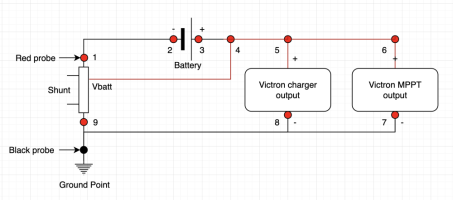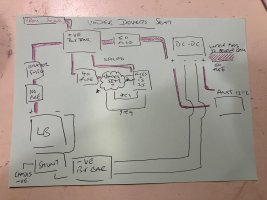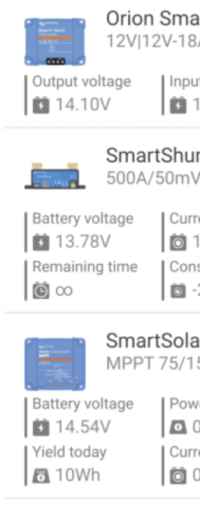The shunt is on the negative and the other devices could (and probably are) connected to a vehicle ground near each box. Being close to the shunt on the negative side is irrelevant.As previously mentioned the “Battery Voltage” readings all look wrong. They should be virtually the same. Are all the outputs of the devices connected together very close to the smart shunt. The Orion & MPPT need connecting to the Smart shunt as close as possible with the same size & length of cable. Something is amiss currently (see what I did there?)
Cable sizes and length on the positive can be anything, so long as they don’t cause voltage drop or are too thin for the required power draw.
As an example, my DC-DC, shunt and LB are all under the passenger seat. My MPPT is in the rear wardrobe. The battery voltage is within 0.01v across all devices.



